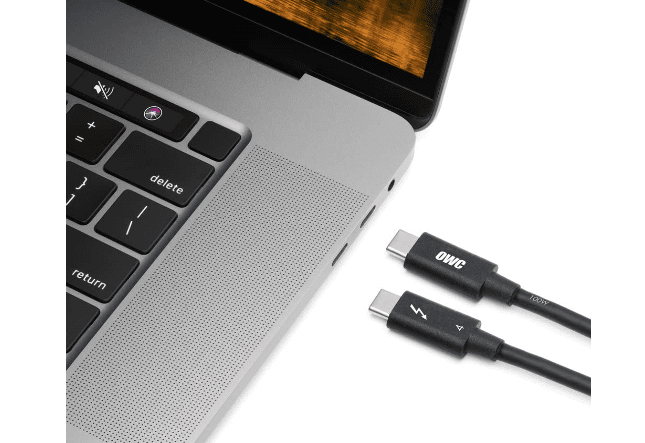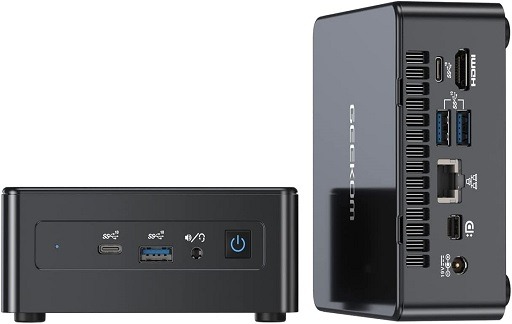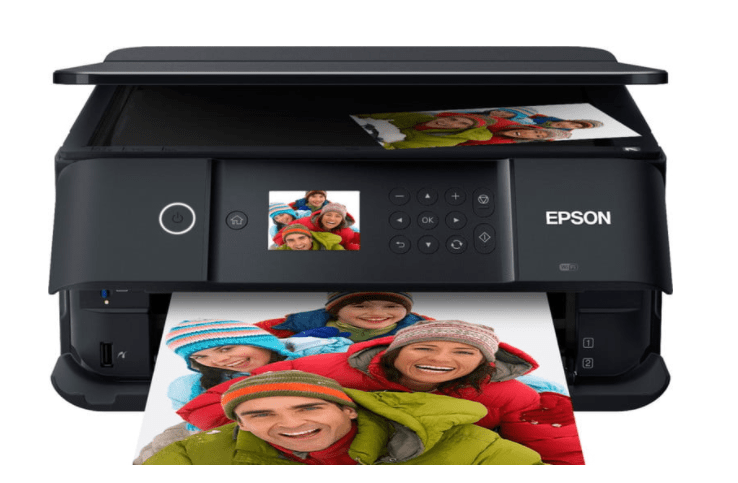Thunderbolt 4 is replacing Thunderbolt 3, which has been the industry standard for high-speed connectivity since 2015. Physically, not much has changed between the two standards, so you may be wondering why the upgrade is such a big deal.
When we delve a little deeper, the advantages of Thunderbolt 4 become clear. Here is a rundown of everything you need to know about Thunderbolt 4.

What is Thunderbolt 4
The Thunderbolt interface was developed by Intel (with assistance from Apple) in 2011. Thunderbolt 1 and 2 used a physical Mini DisplayPort connector before transitioning to a physical USB-C connector with Thunderbolt 3.
Thunderbolt’s beauty is that it combines PCIe, DisplayPort, and power. That means you can use a single cable to perform fast data transfers, robust external display support, and charging. Thunderbolt 4 is the next step in Thunderbolt’s evolution.
In July 2020, Intel announced the new standard, stating that PCs powered by its 11th Generation Tiger Lake processors (CPU) would be the first to consolidate Thunderbolt 4. Devices that do not use these specific CPUs can still benefit from Thunderbolt 4 if the proper controller is used.
Thunderbolt 4 retains the USB-C form factor and is backward compatible with previous versions. It can also handle USB, with USB4 compliance added alongside older versions.
This is the new preferred method for connecting external devices such as high-speed storage, high-resolution monitors, and docking stations. It should support daisy chains of up to six connected devices.
You may also like: Best USB C dock: How long can a USB-C cable be?
Thunderbolt 4 Vs. Thunderbolt 3
Thunderbolt 4 retains the same 40Gbps bandwidth as Thunderbolt 3, but some of its other features have been enhanced. It effectively doubles video support, allowing for dual 4K 60Hz displays or one 8K 30Hz display from a single port. It should make your life easier if you’re a power user with multiple high-resolution displays.
It requires twice as much minimum PCIe bandwidth, increasing from 16Gbps to 32Gbps. This translates to faster transfers of up to 3,000MB/s for those who frequently use the best external hard drives. External GPU users who want to maximize performance should do the same.
It provides additional DMA protection via Virtualization Technology for Directed I/O (VT-d) to assist in dealing with connected threats. You’ll also be able to wake up your PC using any device connected to a Thunderbolt docking station.
The best Thunderbolt 4 hubs and docking stations will have up to three downstream Thunderbolt ports and cables that are up to two meters long. Cables ranging in length from five to fifty meters are also in the works, though most likely for a future standard.
You may also like: The Best USB Charging Hubs
Thunderbolt 4 Vs USB4
It is not the same as USB4, though they are both compatible. USB4 lacks some features as well as the same minimum requirements that help ensure all Thunderbolt 4 products perform essentially at the same level.
The minimum speed of USB4 can be as low as 20Gbps (or as high as 40Gbps), whereas Thunderbolt 4’s minimum speed is fixed at 40Gbps. The minimum power through ports is also reduced by half, to 7.5W instead of 15W. USB4 only guarantees one external display, whereas Thunderbolt 4 guarantees dual 4K displays at 60Hz as a minimum.
The takeaway here is that Thunderbolt 4 and USB4 are inextricably linked, with the latter providing a more solid foundation for expected performance.
You may also like: Nvidia New RTX 3080 with 12GB of Memory
Laptops come with Thunderbolt 4
More and more laptops are being released with Thunderbolt 4 ports. These typically have 11th or 12th-generation Intel Core CPUs and are fine Ultrabooks with a focus on performance in a thin and light body. That has recently changed, with gaming, business, and workstation laptops adopting TB4.
If you buy a laptop with Intel hardware that was announced within the last year or so, it will almost certainly have Thunderbolt 4 if it has any Thunderbolt at all. Check out our roundup of the best Thunderbolt 5 laptops, as well as our collection of the best Windows laptops.
CamRojud may earn a certain commission on products purchased via our links, which supports our effort on this content.
Would you like to read more about Thunderbolt 4-related articles? If so, we invite you to take a look at our other tech topics before you leave!












